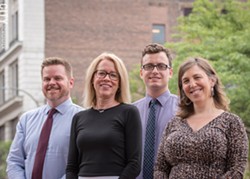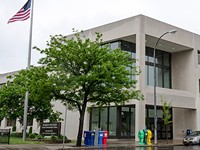The future of Rochester in a few hundred pages
“Rochester 2034” is the latest version of the city’s comprehensive plan
By Mary Anna Towler[
{
"name": "500x250 Ad",
"insertPoint": "5",
"component": "15667920",
"parentWrapperClass": "",
"requiredCountToDisplay": "1"
}
]
In 15 years, Rochester will celebrate its 200th anniversary as an incorporated city. It’s not likely to look dramatically different than it does now, but change is inevitable. And government officials can have a good bit of influence on how change affects the people who live and work here.
Some of that influence will come from a document nearing completion right now: “Rochester 2034,” the latest version of the city’s comprehensive plan. Hundreds of pages long, full of photographs and charts, “Rochester 2034” will help guide city officials as they make decisions about things like land use, development, and zoning over the next 15 years or more. Significantly, it will guide officials as they write the next version of the city’s zoning code.
While city planners and other City Hall staff wrote the new comprehensive plan, it’s the result of extensive input from the public, both before it was written and as city staff have discussed its draft version with neighborhood groups and others over the past several months. It’s also posted on the city’s website.
A three-month public comment period on the draft version ends August 16. City planners will keep making revisions through the end of the month, based on what they’re hearing. And they hope to present the final plan to the Planning Commission September 9 and to City Council in the fall.
In addition to being a blueprint for things like the zoning code, Rochester’s comprehensive plan also serves as a vision of what the community hopes to be. And as with previous comprehensive plans, the language can sometimes be a little lofty. It envisions Rochester in 2034 this way: “a beautiful, progressive, lively, healthy, and welcoming city... a resilient and confident community where diverse neighborhoods are engaged and thriving; downtown is the vibrant heart of our region; our unique network of active waterfronts is accessible to all; and innovation, adaptation, and inclusion drive us forward.”
“Rochester 2034” isn’t a document full of pipe dreams, though. In fact, it’s refreshingly realistic in many areas. The comprehensive plan, says Dorraine Kirkmire, the city’s Manager of Planning, has to strike a balance. It has to be visionary, because it has to reflect the community’s hopes and anticipate what will happen in the next 15 or so years. But, she says, it can’t be so visionary and so lofty that what it recommends won’t happen.
The comprehensive plan is full of recommendations, and they’re just that: recommendations, not laws or zoning changes. But it’s an important document. While the zoning code governs things like whether businesses can be located in residential areas, New York law says zoning codes have to be “adopted in accordance with a comprehensive plan.”
“The comprehensive plan should provide the backbone for the local zoning law,” says a state publication on zoning and planning.
Previous comprehensive plans and other, similar documents have left their imprint on the Rochester we have now. The city has been hit hard by suburban sprawl and the dramatic shrinkage of big industry, but the growth in downtown housing; the focus on access to the river; the requirement that new downtown construction be built flush with public sidewalks rather than set back, suburban office-park style: all of that has been reflected in previous comprehensive plans and related documents.
In many areas, “Rochester 2034” continues charting the course set in previous comprehensive plans. But it also reflects the changes the city has experienced. In its discussion of retail, the plan recommends that the city re-examine its parking requirements and think about loosening them. Businesses like the Dinosaur Barbecue downtown and restaurants on Park Avenue have been successful without designated off-street parking, the plan notes.
And “2034” reflects new interests and new concerns. There’s a consistent focus on the importance of equity, on the value of diversity, on the need for affordable housing.
In the discussion of arts and culture, the plan notes the difficulty of funding the arts and recommends that the city consider establishing a “percent for the arts” ordinance, perhaps requiring developers to set aside funding for the arts. It notes concerns about equity in funding for the arts. It recommends creating a Public Art Master Plan. It recommends looking for additional outdoor performance spaces as well as “a covered outdoor space with permanent stage infrastructure for festivals and concert events.”
There are sections on water quality, air quality, parks, the urban forest, historic preservation, urban agriculture. There’s a section on climate change, the economy, health.
The plan says Rochester needs to be a more walkable city – including in the winter. “Rochester,” it says, “is among only five worldwide cities that have at least 200,000 people and average 100 inches or more of snow during the winter.” It says Rochester should plan less around automobiles and encourage and support other forms of transportation, including public transit and bikes.
It has an even-handed section on schools, emphasizing the impact of the city’s concentrated poverty and insisting that “all communities within the region” have to recognize their role in creating that poverty and their responsibility for addressing it.
It notes that while many students in the district struggle, some students get an excellent education. It endorses the “community school concept,” in which schools serve as neighborhood centers, with services for neighborhood residents. And it recommends that the Rochester school district reexamine its school-choice system and consider reverting to some form of neighborhood school structure.
The staff who wrote the plan assume that Rochester’s population will grow, and if that happens, some neighborhoods will need to become more dense. The comprehensive plan recommends that density be encouraged along transit lines. It recommends that in “medium density” neighborhoods (generally, where two-family residences exist now), the city permit conversions to four-family units. And it recommends that in the future, if the city grows to the point that it might be needed, the city consider permitting one “subordinate” unit – a “granny flat” in the backyard, perhaps – in “low density,” single-family neighborhoods.
That’s getting strong pushback from some residents in single-family neighborhoods, particularly Browncroft on the city's east side. Kirkmire emphasizes that “2034” isn’t recommending a zoning change. It's recommending that the city consider the change if the city’s population grows sufficiently. Right now, she says, “we have room to grow. We have so many vacant lots.”
The new comprehensive plan is called “a blueprint for growth.” And Kirkmire is convinced that Rochester’s population will grow. There are certainly signs of growth in downtown and in some neighborhoods, and Kirkmire notes that there’s a lot of interest in city living across the country.
Not everybody will be as optimistic about Rochester’s growth as Kirkmire is. The city has lost more than a third of its population since its peak in the 1960’s. That seems to have stabilized now, but even if the population remains flat, the new comprehensive plan can help make the city a better place to live and work.
And although the public-comment period for the draft version ends on August 16, there'll be time for more comments when the Planning Commission and City Council start discussing it.
Some of that influence will come from a document nearing completion right now: “Rochester 2034,” the latest version of the city’s comprehensive plan. Hundreds of pages long, full of photographs and charts, “Rochester 2034” will help guide city officials as they make decisions about things like land use, development, and zoning over the next 15 years or more. Significantly, it will guide officials as they write the next version of the city’s zoning code.
While city planners and other City Hall staff wrote the new comprehensive plan, it’s the result of extensive input from the public, both before it was written and as city staff have discussed its draft version with neighborhood groups and others over the past several months. It’s also posted on the city’s website.
A three-month public comment period on the draft version ends August 16. City planners will keep making revisions through the end of the month, based on what they’re hearing. And they hope to present the final plan to the Planning Commission September 9 and to City Council in the fall.
In addition to being a blueprint for things like the zoning code, Rochester’s comprehensive plan also serves as a vision of what the community hopes to be. And as with previous comprehensive plans, the language can sometimes be a little lofty. It envisions Rochester in 2034 this way: “a beautiful, progressive, lively, healthy, and welcoming city... a resilient and confident community where diverse neighborhoods are engaged and thriving; downtown is the vibrant heart of our region; our unique network of active waterfronts is accessible to all; and innovation, adaptation, and inclusion drive us forward.”
“Rochester 2034” isn’t a document full of pipe dreams, though. In fact, it’s refreshingly realistic in many areas. The comprehensive plan, says Dorraine Kirkmire, the city’s Manager of Planning, has to strike a balance. It has to be visionary, because it has to reflect the community’s hopes and anticipate what will happen in the next 15 or so years. But, she says, it can’t be so visionary and so lofty that what it recommends won’t happen.
The comprehensive plan is full of recommendations, and they’re just that: recommendations, not laws or zoning changes. But it’s an important document. While the zoning code governs things like whether businesses can be located in residential areas, New York law says zoning codes have to be “adopted in accordance with a comprehensive plan.”
“The comprehensive plan should provide the backbone for the local zoning law,” says a state publication on zoning and planning.
Previous comprehensive plans and other, similar documents have left their imprint on the Rochester we have now. The city has been hit hard by suburban sprawl and the dramatic shrinkage of big industry, but the growth in downtown housing; the focus on access to the river; the requirement that new downtown construction be built flush with public sidewalks rather than set back, suburban office-park style: all of that has been reflected in previous comprehensive plans and related documents.
In many areas, “Rochester 2034” continues charting the course set in previous comprehensive plans. But it also reflects the changes the city has experienced. In its discussion of retail, the plan recommends that the city re-examine its parking requirements and think about loosening them. Businesses like the Dinosaur Barbecue downtown and restaurants on Park Avenue have been successful without designated off-street parking, the plan notes.
And “2034” reflects new interests and new concerns. There’s a consistent focus on the importance of equity, on the value of diversity, on the need for affordable housing.
In the discussion of arts and culture, the plan notes the difficulty of funding the arts and recommends that the city consider establishing a “percent for the arts” ordinance, perhaps requiring developers to set aside funding for the arts. It notes concerns about equity in funding for the arts. It recommends creating a Public Art Master Plan. It recommends looking for additional outdoor performance spaces as well as “a covered outdoor space with permanent stage infrastructure for festivals and concert events.”
There are sections on water quality, air quality, parks, the urban forest, historic preservation, urban agriculture. There’s a section on climate change, the economy, health.
The plan says Rochester needs to be a more walkable city – including in the winter. “Rochester,” it says, “is among only five worldwide cities that have at least 200,000 people and average 100 inches or more of snow during the winter.” It says Rochester should plan less around automobiles and encourage and support other forms of transportation, including public transit and bikes.
It has an even-handed section on schools, emphasizing the impact of the city’s concentrated poverty and insisting that “all communities within the region” have to recognize their role in creating that poverty and their responsibility for addressing it.
It notes that while many students in the district struggle, some students get an excellent education. It endorses the “community school concept,” in which schools serve as neighborhood centers, with services for neighborhood residents. And it recommends that the Rochester school district reexamine its school-choice system and consider reverting to some form of neighborhood school structure.
The staff who wrote the plan assume that Rochester’s population will grow, and if that happens, some neighborhoods will need to become more dense. The comprehensive plan recommends that density be encouraged along transit lines. It recommends that in “medium density” neighborhoods (generally, where two-family residences exist now), the city permit conversions to four-family units. And it recommends that in the future, if the city grows to the point that it might be needed, the city consider permitting one “subordinate” unit – a “granny flat” in the backyard, perhaps – in “low density,” single-family neighborhoods.
That’s getting strong pushback from some residents in single-family neighborhoods, particularly Browncroft on the city's east side. Kirkmire emphasizes that “2034” isn’t recommending a zoning change. It's recommending that the city consider the change if the city’s population grows sufficiently. Right now, she says, “we have room to grow. We have so many vacant lots.”
The new comprehensive plan is called “a blueprint for growth.” And Kirkmire is convinced that Rochester’s population will grow. There are certainly signs of growth in downtown and in some neighborhoods, and Kirkmire notes that there’s a lot of interest in city living across the country.
Not everybody will be as optimistic about Rochester’s growth as Kirkmire is. The city has lost more than a third of its population since its peak in the 1960’s. That seems to have stabilized now, but even if the population remains flat, the new comprehensive plan can help make the city a better place to live and work.
And although the public-comment period for the draft version ends on August 16, there'll be time for more comments when the Planning Commission and City Council start discussing it.
Speaking of...
-
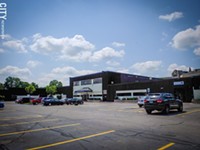
City seeks developer to lead Bull's Head effort
Jul 20, 2020 -
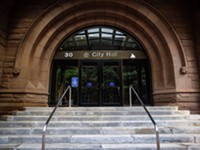
Council approves Rochester 2034 plan
Nov 12, 2019 -

Rochester's comprehensive plan heads to City Council
Oct 7, 2019 - More »
Latest in Urban Journal
More by Mary Anna Towler
-
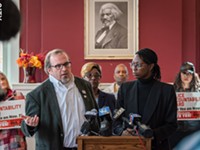
Police reform: advocates on what should come next
Oct 22, 2019 -

Court clears the way for Police Accountability referendum
Oct 17, 2019 -

Dade outlines initial actions on district deficit
Oct 9, 2019 - More »
